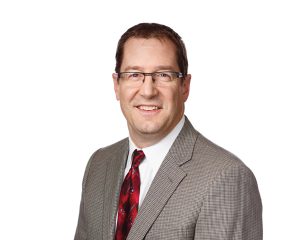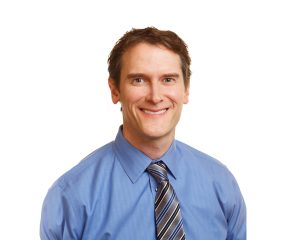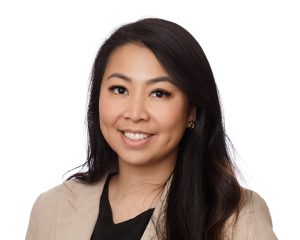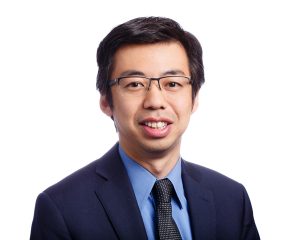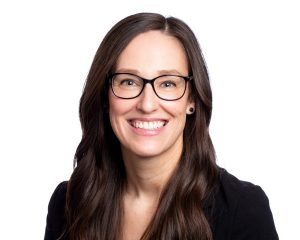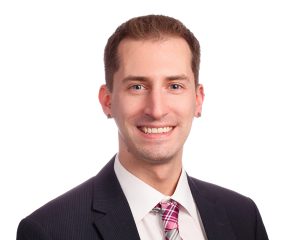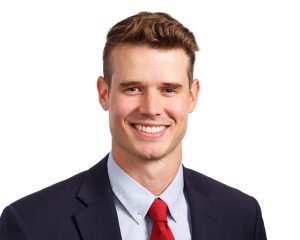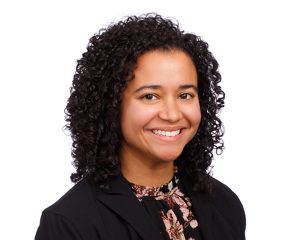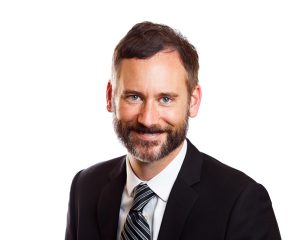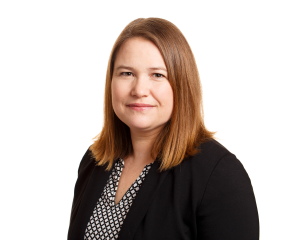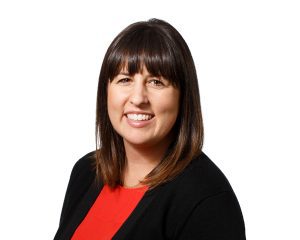Sleep Medicine
The Oregon Clinic’s team of sleep medicine specialists provide expertise in evaluating and treating sleep-related illnesses and disorders.
- ABOUT US
- OUR TEAM
- CONDITIONS & RESOURCES
- FREQUENTLY ASKED QUESTIONS
- OUR LOCATIONS
The science of sleep medicine has advanced in recent years, providing solutions for people suffering from poor quality or insufficient sleep and other associated conditions that affect the respiratory system, specifically diseases of the lungs and associated organs. If you or your partner experience snoring, frequent waking in the night, daytime sleepiness, or insomnia, it may be time to talk with your primary care provider about meeting with a sleep specialist.
Our physicians are dedicated to the practice of evidence-based medicine with special attention to the highest quality of care for patients. We believe the relationship between patients and the sleep specialist is important. In accordance with AASM guidelines, all patients are seen in consultation prior to any diagnostic testing. Our sleep medicine team includes physicians, nurse practitioners, and physician associates, who work in collaboration to meet the individual needs of each sleep patient.
 CONDITIONS
CONDITIONS
- Central sleep apnea
- Excessive daytime sleepiness (EDS)
- Insomnia
- Narcolepsy
- Obstructive sleep apnea (OSA)
- Other sleep-disordered breathing
- Parasomnia (REM sleep behavior disorder)
- Restless leg syndrome (RLS)
- Snoring
 Procedures & Treatments
Procedures & Treatments
- Attended polysomnography (PSG)
- CPAP/BPAP/ASV/AVAPS titration
- Home sleep testing (HST)
- Maintenance of wakefulness test (MWT)
- Multiple sleep latency test (MSLT)
Obstructive sleep apnea (OSA) is the most common type of sleep apnea where the airway becomes blocked by soft tissues in the throat, such as the tongue, the uvula, or tonsils. A patient with sleep apnea may stop breathing (apnea) or breath too shallowly (hypopnea) while sleeping due to their airway relaxing so much that it narrows down or completely closes. This can happen hundreds of times in a single night, leading to a lack of oxygen and significant disruption in sleep.
Symptoms may include:
- Loud snoring
- Gasping or choking during sleep
- Frequent awakenings
- Frequent nighttime urination
- Daytime fatigue
- Insomnia
- Difficulty concentrating
- Morning headaches
- Irritability
- Erectile/Sexual dysfunction
Causes may include:
- Obesity
- Enlarged tonsils or adenoids
- Narrow airway
- Certain medical conditions (e.g., heart failure, stroke)
Left untreated, sleep apnea may contribute to:
- High blood pressure
- Heart disease
- Stroke
- Type 2 Diabetes
- Insomnia
- Cognitive impairment
- Increased risk of workplace and auto accidents
Central sleep apnea (CSA) is a type of sleep disorder where breathing repeatedly stops and starts during sleep due to problems with the brain’s signals that control breathing.
Potential causes:
- Brainstem dysfunction: Damage or disease in the brainstem, which regulates breathing, can lead to CSA. This can occur from a prior stroke or other neurologic disorder.
- Medication side effects: Certain medications, such as opioids and benzodiazepines can suppress breathing and cause CSA.
- Heart failure: In some cases, heart failure can impair the body’s ability to remove carbon dioxide from the blood, leading to CSA.
- Idiopathic: In some cases, the cause of CSA is unknown (idiopathic CSA).
Symptoms:
- Pauses in breathing during sleep (often without snoring)
- Daytime sleepiness
- Fatigue
- Irritability
- Morning headaches
- Difficulty concentrating
Diagnosis: CSA is diagnosed through a sleep study, where a doctor monitors breathing, heart rate, and oxygen levels during sleep. If central sleep apnea is suspected, then you may be asked to get an in-lab sleep study to carefully monitor breathing during sleep.
Treatment: Treatment for CSA typically involves using a device called a positive airway pressure (PAP) machine. PAP delivers pressurized air through a mask worn during sleep, which helps to keep the airway open and prevent breathing pauses. A special type of device called Bi-level ASV (Adaptive servo-ventilation) may be recommended. This monitors your breathing and adjusts the pressures to make your breathing more stable. It may also deliver a breath when necessary if there are prolonged pauses in your breathing during sleep.
In some cases, other treatments such as medications or reducing medication, may be considered.
Snoring is a common issue that can be caused by various factors. Your Oregon Clinic Sleep provider can help to determine the best options and potential need for further evaluation. Many of these topics are covered in more detail elsewhere in our Sleep Medicine FAQ.
Options to consider:
Evaluate for Sleep Apnea:
- Get a Sleep Study: If snoring is severe or accompanied by other symptoms such as daytime fatigue or sleep apnea, it’s strongly recommended to consult a doctor for a sleep study to determine the underlying cause and appropriate treatment. In most cases, this can be a simple study done in your own bed.
Lifestyle Modifications:
- Sleep Position: Avoid sleeping on your back, as it allows the tongue and soft tissues to collapse into the airway, obstructing airflow. Consider sleeping on your side or stomach. Positional therapy devices and body pillows can help to prevent back sleep.
- Elevate: Elevation of the head of bed to between 10-30 degrees using a wedge pillow, bed risers, or adjustable bed (but not pillows alone) may help. This may also help with nasal or sinus congestion and GERD.
- Weight Loss: Excess weight can put pressure on the airway, leading to snoring.
- Alcohol and Sedating Medications: Avoid consuming alcohol or sedatives before bed, as they relax the throat muscles and worsen snoring.
- Exercise: Aerobic exercise can help to tone airway muscles. Strengthening the throat muscles through exercises like singing or tongue exercises can improve airway stability.
- Use a Humidifier: Humidifying the air can reduce dryness and irritation in the airway.
- Treat Allergies: Treatment of allergies or other causes of nasal and sinus congestion may help.
Medical Devices:
- Nasal Strips: These adhesive strips adhere to the outside of the nostrils and may help widen the nasal passages, improving airflow.
- Oral Appliances: Mandibular advancement devices (MADs) or tongue retaining devices (TRDs) are custom-made appliances that fit into the mouth and reposition the tongue or lower jaw to prevent airway obstruction. Your provider can help with a referral, if appropriate.
- Continuous Positive Airway Pressure (CPAP): This machine, used to treat snoring with sleep apnea, delivers pressurized air through a mask worn during sleep, keeping the airway open and reducing snoring.
Surgical Interventions (only in specific cases):
- Uvulopalatoplasty (UVP): Surgery to remove excess tissue from the soft palate and uvula, which can obstruct the airway.
- Tonsillectomy or Adenoidectomy: In certain situations, removal of the tonsils or adenoids, which can enlarge and block airflow, may be appropriate.
- Hypoglossal Nerve Stimulation: A surgically implanted battery powered device that electrically stimulates the tongue to contract with each breath during sleep to help open the airway. Ask your provider if you would like to be considered for this.
Important Note:
The effectiveness of these treatments can vary depending on the individual and the underlying cause of snoring. It’s recommended to consult a healthcare professional for personalized advice and evaluation.
At The Oregon Clinic, we are currently using the WatchPAT device in most cases for home sleep apnea testing. This is a home-based sleep study that uses a portable, FDA-cleared device to screen for and diagnose sleep apnea and other sleep-related disorders. It measures parameters like heart rate, oxygen saturation, snoring, and breathing patterns by using a wrist-worn sensor and a fingertip sensor to collect data overnight in a comfortable, non-invasive way. The data from the study helps doctors accurately diagnose sleep disorders without the need for a lab setting.
This type of study may work to establish a diagnosis of sleep apnea. HOWEVER, a negative or non-diagnostic result does not definitively rule out a diagnosis of sleep apnea. For this reason, your provider may recommend a more comprehensive and sensitive in-lab sleep study if your WatchPAT study is not conclusive.
Not everyone is a suitable candidate for the WatchPAT potentially due to other medical conditions, certain medications, or other considerations. Your provider will help to determine the best study for your particular situation.
How WatchPAT works:
- Easy to wear: The patient wears a wrist-worn device and a small sensor on their fingertip.
- Monitors key data: The devices monitor heart rate, oxygen levels, breathing patterns, and snoring.
- Collects advanced data: The fingertip sensor measures peripheral arterial tonometry signal derived from vascular changes due to fluctuations in sympathetic nervous system signals, which helps identify sleep levels and is more detailed than basic oximetry.
- Uploads data: The data is automatically uploaded to a computer for a doctor to review and validate.
Key benefits:
- Convenience: The study is done at home, eliminating the need for a lab visit and allowing patients to sleep in their own bed.
- Comfort: The device is less intrusive than traditional sleep studies as it doesn’t require a mask or multiple wires.
- Accuracy: It provides detailed information that can be used for accurate diagnosis and treatment planning.
- Speed: The study can usually be obtained more quickly than an in-lab sleep study due to limited sleep lab availability.
In most cases, your provider will communicate the results of your study along with subsequent recommendations for treatment, if indicated, through MyChart.
An in-lab split-night sleep study is a diagnostic sleep test that combines two procedures into a single overnight stay: first, a diagnostic phase to identify breathing issues like sleep apnea, and second, a therapeutic phase to determine the correct pressure for CPAP therapy. This allows for a quicker diagnosis and treatment plan for moderate to severe sleep apnea in one night, saving costs and time.
Purpose:
- To identify and diagnose sleep disorders such as sleep apnea, insomnia, and narcolepsy.
- To assess the severity of sleep disorders and guide treatment options.
- If at least moderate sleep apnea is detected during the first few hours of monitoring, then you may be asked to wear a CPAP mask for the remainder of the study to determine an appropriate CPAP pressure for treatment.
Procedure:
- The study takes place in a specialized sleep lab. This is usually at a Providence Hospital location or similar facility.
- Sensors are attached to the body, including the scalp, on either side of the eyes, chin, chest, abdomen, and legs.
- These sensors record brain waves, eye movements, heart rate, breathing patterns, oxygen levels, and body movements.
- Diagnostic phase: The first part of the night uses these sensors to monitor your brain activity, heart rate, breathing, oxygen levels, and muscle activity to diagnose a sleep disorder. This phase requires at least two hours of sleep. If sleep apnea is not assessed to be of sufficient severity, then the entire study may proceed without the use of CPAP.
- Therapeutic phase: If the diagnostic portion shows signs of at least moderate sleep apnea, the technologist will begin the titration phase, which involves placing a CPAP mask on you and adjusting the pressure to find the most effective level for you to use during sleep.
- The technician can easily help you get disconnected for bathroom breaks.
Results:
- The sleep study data is analyzed by a sleep medicine specialist.
- The specialist interprets the results and determines if a sleep disorder is present.
- Based on the findings, the specialist may recommend treatment options such as CPAP therapy, an oral appliance, medication, or lifestyle changes.
Benefits:
- Provides a comprehensive and accurate diagnosis of sleep disorders.
- Helps to monitor the effectiveness of treatment.
- Can identify underlying medical conditions that may contribute to sleep problems.
Limitations:
- Can be expensive. Contact your insurance company to clarify copay amounts.
- May not accurately reflect a person’s typical sleep patterns if they are anxious or uncomfortable in the lab environment.
- Not suitable for people with certain medical conditions, such as severe dementia, impaired mobility, or other conditions.
Your provider will work with you to determine the most appropriate test for your situation.
Epic MyChart is a patient portal used by healthcare providers at The Oregon Clinic who use Epic’s electronic health record (EHR) system. It allows patients to access their health information, communicate with their care team, schedule appointments, view test results and bills, and manage their healthcare online and through a mobile app.
We will use MyChart for the majority of communication regarding sleep study results and subsequent management.
Key features of Epic MyChart:
- Access to health records: View your medical history, including medications, immunizations, allergies, past procedures, and lab results.
- Appointment management: Schedule and manage appointments, complete pre-visit tasks, and get reminders.
- Communication: Send secure messages to your care team and receive online or video consultations.
- Billing and payments: View and pay medical bills.
- Medication management: Request prescription refills.
- Unified health record: You can connect accounts from different healthcare organizations to see all your information in one place.
How to get started:
- Sign up: Create an account through The Oregon Clinic’s website or the MyChart mobile app.
- Log in: Sign in with your username and password or set up quick login options like a passcode or fingerprint.
- Connect accounts: If you have records from multiple providers that use Epic, you can connect them to manage your health information in a single location.
AHI stands for Apnea-Hypopnea Index. It is a metric used in sleep studies to measure the severity of obstructive sleep apnea (OSA).
Calculation:
- Apnea: A complete cessation of breathing for at least 10 seconds.
- Hypopnea: A reduction in breathing effort by at least 30% for at least 10 seconds accompanied by a drop in oxygen saturation of at least 4%.
The AHI is calculated by adding up the number of apneas and hypopneas per hour of sleep and dividing by the number of hours slept.
Interpretation:
- 0-5: Normal sleep
- 5-14: Mild OSA
- 15-29: Moderate OSA
- 30 or more: Severe OSA
A higher AHI score indicates a more severe case of OSA. It is used to diagnose OSA, monitor its severity, and guide treatment decisions, such as continuous positive airway pressure (CPAP) therapy.
Important Notes:
- AHI is just one metric used to assess OSA severity. Other factors, such as symptoms, oxygen levels, and sleep quality, other medical conditions are also considered.
- The quality and adequacy of the study must be considered.
- Sleep apnea may only be present or may be more severe in certain positions (on your back) or during specific stages of sleep (REM). The amount of time spent in these conditions (if any) during your study may affect your results.
- Your provider can help to interpret your specific results in the context of your overall health to direct to the best treatment plan for you.
A patient with sleep apnea may stop breathing (apnea) or breath too shallowly (hypopnea) while sleeping due to their airway relaxing so much that it narrows down or completely closes. This can happen hundreds of times in a single night, leading to a lack of oxygen and significant disruption in sleep.
A CPAP (continuous positive airway pressure) machine helps treat sleep apnea. This device delivers continuous air pressure through your mouth and/or nose to help keep your airways open while you sleep.
A CPAP machine includes:
- A mask that fits over just your nose or both your nose and mouth.
- Straps to position the mask on your face and hold it in place.
- A tube that connects the mask to the machine’s motor.
- A motor that blows room air into the tube.
- An air filter that purifies the air entering your nose or mouth.
- A heater and humidifier water reservoir to provide comfortable air.
- Pressure settings that can be adjusted by your provider to optimize treatment.
Auto CPAP (automatic continuous positive airway pressure) is a type of treatment for obstructive sleep apnea (OSA) that automatically adjusts the air pressure delivered to the patient during sleep.
How it works:
- An Auto CPAP machine monitors the patient’s breathing patterns throughout the night.
- When the machine detects a drop in airflow (hypopnea) or breathing pauses (apnea), it increases the air pressure to keep the airway open.
- As the patient’s breathing improves, the machine reduces the pressure to a more comfortable level.
Benefits:
- Provides individualized treatment based on the patient’s specific needs.
- Reduces discomfort and side effects associated with fixed-pressure CPAP, such as excessive air pressure or dry mouth.
- May improve sleep quality and reduce daytime sleepiness.
Who it is suitable for:
- Patients with OSA who have difficulty tolerating fixed-pressure CPAP.
- Patients whose sleep apnea severity fluctuates throughout the night. For example, in different body positions or during different stages of sleep.
Limitations:
- Can be more expensive than fixed-pressure CPAP.
- May require some trial and error to find the optimal pressure settings.
- Not suitable for all patients with OSA.
Your provider will work with you to determine if Auto CPAP might be an appropriate option for you.
A CPAP machine is just one type of PAP (positive airway pressure) device. CPAP is the most common among these machines. Other types include:
- Auto CPAP: This device self-regulates, using a range of pressures to keep your airways open. In some cases, this can be used to determine optimal pressure settings for someone just starting out on CPAP or to fine tune settings for a patient needing an adjustment to their current settings.
- Bi-level PAP (BiPAP): This machine uses two different pressures (—) a higher pressure while breathing in (inhalation) and a lower one while breathing out (exhalation). This may be more comfortable for patients who struggle to exhale with regular CPAP. Bi-level may also be used to help patients with other respiratory conditions such as COPD.
- Auto-Bilevel PAP (Auto BiPAP): This machine self-regulates the inhalation and exhalation pressures in a fashion similar to Auto CPAP described above.
- Bi-level ASV (Adaptive servo-ventilation): This machine is for people with certain types of central sleep apnea. ASV monitors your breathing and adjusts the pressures to make your breathing more stable. It may also deliver a breath when necessary if there are prolonged pauses in your breathing during sleep.
- Bi-level AVAPS (Average Volume Assured Pressure Support): This is a highly specialized device that administers a predetermined breath volume (tidal volume) by automatically adjusting the inspiratory positive airway pressure (IPAP) within a preset range. It may also ensure a minimum number of breaths are administered every minute. This ensures that the patient receives adequate ventilation, regardless of changes in their respiratory effort or lung compliance. This device may be indicated for certain patients with chronic respiratory failure, COPD, and obesity hypoventilation syndrome, among other possible diagnoses.
Your provider will work with you to ensure that you are prescribed the proper device for your diagnosis and comfort.
Determining the best CPAP mask style and fit is one of the most important steps in ensuring success with treatment.
CPAP mask types include:
- Nasal mask: This option covers your nose. Healthcare providers often recommend a nasal mask if you move around a lot when you sleep.
- Nasal pillow mask: Rather than covering your entire nose, a nasal pillow mask only covers your nostril area. Some options also have prongs that fit into your nostrils. People who wear nasal pillow masks can wear their glasses comfortably.
- Full mask: This triangular mask fits over your nose and mouth. A full mask is best if you breathe through your mouth during sleep. Your provider may also recommend this type of mask if you have a nasal blockage.
- Hybrid mask: This is a type of full-face mask that fits over your mouth and has prongs or cushions that seal your nostrils without covering the bridge of your nose.
- Chin strap: Patients who prefer a nasal mask or nasal pillow style of mask but inadvertently open their mouth while sleeping may benefit from a chin strap to help keep the mouth closed during sleep.
You will have a choice of Durable Medical Equipment (DME) provider based on your insurance. This company will connect with you to supply your CPAP mask and machine. They will go over your mask options with you. They’ll also work with you to find the best type and fit of mask. Don’t hesitate to ask questions or voice your concerns. Most people end up trying a few different masks before they find the one that they like best. If your mask is leaking or uncomfortable, then contact your DME provider to address this ASAP.
In most cases your DME contact number can be found on a sticker on your CPAP machine.
Your insurance will contract with a limited number of CPAP Durable Medical Equipment (DME) supply companies. Our clinic will review your options with you and put you in contact with a DME supply company. That company will be responsible for submitting the billing to insurance and will hold the contract for your CPAP machine and supplies. They are also responsible for setting you up on the CPAP and fitting you for a mask. If you are having difficulty with your mask or have questions about the machine, reach out to the supply company for help. In most cases your DME contact number can be found on a sticker on your CPAP machine.
Your DME company will reach out to schedule a time for you to pick up your machine and mask.
Things to remember to ask about when you pick up your CPAP machine and mask. You might want to take a screen shot to have this with you:
- Best mask style and fit for you. Ideally, have them fit the mask while the machine is on and at pressure with you lying down, if possible.
- If you have claustrophobia or wear glasses let them know.
- If you wear dentures or a bridge, will you be wearing them while sleeping? Get your mask fitted with or without these things, as appropriate.
- Ask about “comfort settings” for the humidifier and other adjustments.
- Ask them to review the use of the “ramp” function, if appropriate.
- Enquire about a schedule for mask and supply replacement. Automatic resupply can be requested.
- Enquire about recommendations for mask and equipment cleaning.
- Make certain a DME contact number is available for questions. Usually a sticker on the machine.
Your insurance will contract with a limited number of CPAP Durable Medical Equipment (DME) supply companies. Our clinic will review your options with you and put you in contact with a DME supply company. That company will be responsible for submitting the billing to insurance and will hold the contract for your CPAP machine and supplies. They are also responsible for setting you up on the CPAP and fitting you for a mask. If you are having difficulty with your mask or have questions about the machine, reach out to the supply company for help. In most cases your DME contact number can be found on a sticker on your CPAP machine.
If you are concerned about the pressure setting or having a hard time with the CPAP despite adjustments to the mask fit, humidifier adjustment please reach out to the clinic.
Tips for CPAP success:
- #1: DON’T GIVE UP!! It is a lot to ask of a patient to get used to wearing a mask every night. However, there are a number of little adjustments and fine tuning that can be done to help. The greatest determinant of success is your positive attitude, a desire to improve your health, and determination to persevere to make this work. We are here to help you.
- When getting started, try wearing CPAP/BPAP during the day while watching TV or otherwise distracted to help acclimate to it. Then, also wear it while you sleep.
- If you have a nasal mask, when you turn on the CPAP, breathe slowly in and out through your nose. Try not to open your mouth as this can cause the pressure to increase as air escapes.
- If you find that you fall asleep before putting on the mask, try setting an alarm to prompt you to check that you are wearing it each night.
- If it falls off, or you inadvertently remove it, at night – put it back on! The more you wear it, the more natural it becomes.
- If the mask leaks or causes discomfort, then contact your DME mask supplier to arrange to get tips on mask and head gear adjustment, swap for a new mask, or get a refitting. In most cases your DME contact number can be found on a sticker on your CPAP machine.
- If the pressure feels uncomfortable even after several nights, then contact us.
- It is best to use the CPAP as much as possible with all sleep to help us determine how well it is working for you. Adequate usage is also usually required by insurance.
- Try to use the CPAP for at least 6 hours per night but it is best if you use the CPAP as much as possible with all sleep.
- The clinic should reach out to you to set up a follow-up visit up once you have the CPAP. This visit is usually required by insurance and is important that we schedule it with in a 30 to 90-day window.
CPAP Compliance Requirements:
In order to ensure ongoing insurance coverage for your CPAP/BPAP device, you must demonstrate “compliance”. Compliance is defined as wearing the mask for an average of at least 4 hours per night on 70% of the nights (5 out of 7 days).
Your CPAP machine will monitor and record your usage of CPAP. The machine also tracks whether your sleep apnea is adequately controlled and reports other helpful parameters such as mask leak. This information is tabulated in a compliance report that will be reviewed with you by your provider at your follow-up appointment.
Studies have repeatedly demonstrated that usage of at least 4 hours on a consistent basis is required to begin to derive benefit from CPAP. For optimal success, wear your CPAP/BPAP mask every night and for all hours of sleep.
Cleaning devices that use ozone or ultraviolet light are not FDA approved and may have unintended consequences. It is currently recommended that consumers follow the cleaning instructions provided by the CPAP manufacturer.
Consult with your specific Durable Medical Equipment (DME) provider for their recommendations for cleaning. Improper cleaning may affect your warranty. In most cases your DME contact number can be found on a sticker on your CPAP machine.
General guidelines for CPAP equipment cleaning:
- Allow all components to dry out as much as possible every day.
- Clean supplies with a very small amount of gentle dish soap and warm water. Allow to dry completely. Do not use products containing alcohol, chlorine bleach, ammonia, or moisturizers.
- Disposable wipes specifically formulated for CPAP mask cleaning are available.
- Daily: Empty humidifier chamber.
- Daily: Wash mask or nasal pillows with soap and water or wipes.
- Weekly: Wash tubing, mask, headgear, and humidifier reservoir.
- You can also use 1 part vinegar to 4 parts water for tubing and reservoir.
- Replace the mask cushion: twice per month for nasal pillows. Once per month for mask.
CPAP supplies replacement schedule may vary by Durable Medical Equipment (DME) provider. Check with your specific DME for details. In most cases your DME contact number can be found on a sticker on your CPAP machine.
General recommendations for replacement are as follows:
- Tubing: Every 3-6 months
- Filters: Varies by model but usually monthly
- Humidifier chamber: Every 6 months
- Nasal cushions: 2/month
- Nasal pillow cushions: 2/month
- Full face cushion: 1/month
- Mask frame: Every 3 months
- Headgear: Every 6 months
- Chinstrap: every 6 months
- CPAP machine: no earlier than 5 years or if malfunctioning
Dry mouth is a common side effect of continuous positive airway pressure (CPAP) therapy. It occurs when the airflow from the CPAP machine dries out the tissues in the mouth and throat.
Causes:
- Mask leak: Air leaking from a poor mask seal causes the machine to increase airflow to compensate for the leak. A significant portion of the humidified air is lost to leak.
- Airflow from CPAP machine: The pressurized air can bypass the natural humidification process of the nose and mouth, leading to dryness.
- Nasal masks: Nasal masks may allow some air to escape through the mouth, further contributing to dryness.
- Reduced saliva production: CPAP therapy can stimulate the salivary glands, but this effect may not be enough to compensate for the increased dryness.
Prevention and management:
- Humidifier: Use a heated humidifier with your CPAP machine to add moisture to the air. This can be adjusted in comfort settings on your machine.
- Mask fit: You may need a different style or size of mask. Contact your mask supplier for help.
- Dirty mask: Facial oils or grime can accumulate on the mask contact surfaces and worsen mask leak. Thorough and consistent cleaning and regular mask replacement can help.
- Mask dislodgment: You may need adjustment to head gear or new head gear if the straps are losing elasticity. The use of a contoured pillow that avoids pushing on the mask during side sleep may help.
- Full-face mask: Consider switching to a full-face mask that covers both the nose and mouth, which can help prevent air leakage.
- Chin strap: A chin strap can help keep your mouth closed during sleep.
- Oral hygiene: Brush your teeth regularly and use an oral rinse to promote saliva production.
- Saliva substitutes: Over-the-counter saliva substitutes can help moisturize your mouth.
- Medications: Your doctor may prescribe medications to stimulate saliva production or reduce dryness. Some medications such as diuretics or antidepressants can contribute to dry mouth. You might review medications with your PCP.
- Lifestyle changes: Drink plenty of fluids, avoid caffeine and alcohol, and quit smoking.
Additional tips:
- Contact your Durable Medical Equipment (DME) provider for recommendations. In most cases your DME contact number can be found on a sticker on your CPAP machine.
- Be patient: It may take some time to find the right combination of measures to manage dry mouth effectively.
- Dry mouth can be a common but manageable side effect of CPAP therapy. By following these tips, you can minimize discomfort and ensure a comfortable night’s sleep.
Hypoglossal nerve stimulation (HNS) is a treatment for obstructive sleep apnea (OSA), a condition where the airway collapses during sleep, leading to interrupted breathing. One such device is marketed under the name Inspire.
How it works:
- Surgery under general anesthesia is required. A small, implantable, battery powered device is surgically placed under the skin in the chest. A wire is tunneled under the skin of the neck to the angle of the jaw where a second incision is made to attach the wire to a nerve supplying the tongue.
- The device sends electrical impulses to the hypoglossal nerve, which controls the muscles that move the tongue.
- These impulses stimulate the tongue to move forward during sleep with every breath, potentially opening the airway.
Benefits:
- If successful, may reduce the frequency and severity of sleep apnea episodes.
- Improves sleep quality and reduces daytime sleepiness.
- May improve overall health and well-being.
HNS may be a suitable treatment option for patients with OSA who:
- Do not respond well to CPAP therapy (continuous positive airway pressure).
- Have a moderate to severe form of OSA.
- Are in good overall health.
Side effects:
- Temporary discomfort or pain at the incision site.
- Temporary changes in tongue sensation.
- Risk of infection or device malfunction.
- Intolerance for ongoing use.
- Requirement for battery exchange at some point in the future.
Your provider can help to determine if HNS is an appropriate consideration for you.
Restless legs syndrome (RLS) is a common sleep disorder characterized by an irresistible urge to move the legs, typically accompanied by unpleasant sensations such as tingling, crawling, or pulling. It should not be confused with leg cramps or peripheral neuropathy.
Symptoms:
- An irresistible urge to move the legs, especially when sitting or lying down.
- Unpleasant sensations in the legs, often described as tingling, crawling, or pulling.
- Relief with movement.
- Symptoms worsen in the evening or at night.
Causes: The exact cause of RLS is unknown, but it is believed to involve a combination of factors, including: genetics, dopamine dysfunction, iron deficiency, and pregnancy.
Prevalence: RLS affects an estimated 5-10% of the population, with women being more commonly affected than men. It is more prevalent in older adults.
Diagnosis: RLS is typically diagnosed based on the patient’s symptoms and medical history. There are no specific diagnostic tests. The doctor may ask about the onset and severity of symptoms, as well as any potential triggers. A sleep study is NOT required to make the diagnosis. Patients with RLS may exhibit “periodic limb movements” during an in-lab sleep study.
Treatment: Treatment for RLS aims to relieve symptoms and improve sleep quality. Options include:
- Lifestyle changes: Exercise, avoid caffeine and alcohol before bed, create a relaxing sleep environment, a warm bath.
- Massage: Leg massage or use of leg massagers with heat and compression may give relief.
- Consider avoiding some medications: Common medications that con worsen RLS include most antidepressants (except buproprion), antipsychotics, dopamine-blocking antiemetics (e.g., metoclopramide), centrally-acting antihistamines (e.g., diphenhydramine (Benadryl).
- Potentially helpful medications: Gabapentin, dopamine agonists, such as pramipexole or ropinirole, can help reduce symptoms.
- Iron supplements: If iron deficiency is documented.
Prognosis: RLS is a chronic condition, but it can be managed effectively with treatment. Most people with RLS can live full and active lives with proper care.
Additional Information:
- RLS is also known as Willis-Ekbom disease.
- RLS can sometimes be confused with other conditions, such as leg cramps or peripheral neuropathy.
- It is important to consult a healthcare professional for an accurate diagnosis and treatment plan.
Disclaimer: This information is for general knowledge and informational purposes only, and does not constitute medical advice.
Sleep hygiene is a variety of different practices and habits that are necessary to have good nighttime sleep quality and full daytime alertness.
Healthy sleep is important for both physical and mental health. It can also improve productivity and overall quality of life. Everyone, from children to older adults, can benefit from practicing good sleep habits. Poor sleep can also contribute to other health risks and concerns, avoiding this starts with good sleep hygiene.
One of the most important sleep hygiene practices is to spend an appropriate amount of time asleep in bed, not too little or too much. Sleep needs vary across ages and are especially impacted by lifestyle and health. However, there are recommendations that can provide guidance on how much sleep you need generally. Other good sleep hygiene practices include:
- Eliminate naps. Napping does not make up for inadequate nighttime sleep. However, a short nap of 20-30 minutes can help to improve mood, alertness and performance.
- Avoiding stimulants such as caffeine and nicotine close to bedtime. And when it comes to alcohol, moderation is key. Too much alcohol or alcohol too close to bedtime can disrupt sleep in the second half of the night as the body begins to process the alcohol.
- Exercising to promote good quality sleep. As little as 10 minutes of aerobic exercise, such as walking or cycling, can drastically improve nighttime sleep quality. For the best night’s sleep, most people should avoid strenuous workouts close to bedtime. However, the effect of intense nighttime exercise on sleep differs from person to person, so find out what works best for you.
- Steering clear of food that can be disruptive right before sleep. Heavy or rich foods, fatty or fried meals, spicy dishes, citrus fruits, and carbonated drinks can trigger indigestion for some people. When this occurs close to bedtime, it can lead to painful heartburn that disrupts sleep.
- Ensuring adequate exposure to natural light. This is particularly important for individuals who may not venture outside frequently. Exposure to sunlight during the day, as well as darkness at night, helps to maintain a healthy sleep-wake cycle.
- Establishing a regular relaxing bedtime routine. A regular nightly routine helps the body recognize that it is bedtime. This could include taking warm shower or bath, reading a book, or light stretches. When possible, try to avoid emotionally upsetting conversations and activities before attempting to sleep.
- Making sure that the sleep environment is pleasant. Mattress and pillows should be comfortable. The bedroom should be cool – between 60 and 67 degrees – for optimal sleep. Bright light from lamps, cell phone and TV screens can make it difficult to fall asleep, so turn those lights off or adjust them when possible. Consider using blackout curtains, eye shades, ear plugs, “white noise” machines, humidifiers, fans and other devices that can make the bedroom more relaxing.
- Eliminate electronic devices at least 1 hour before bedtime. This includes phones, computers and tablets.
Frequent sleep disturbances and daytime sleepiness can be the most telling signs of poor sleep hygiene. In addition, if you’re taking too long to fall asleep, you should consider evaluating your sleep routine and revising your bedtime habits. Just a few simple changes can make the difference between a good night’s sleep and a night spent tossing and turning. Source: National Sleep Foundation
